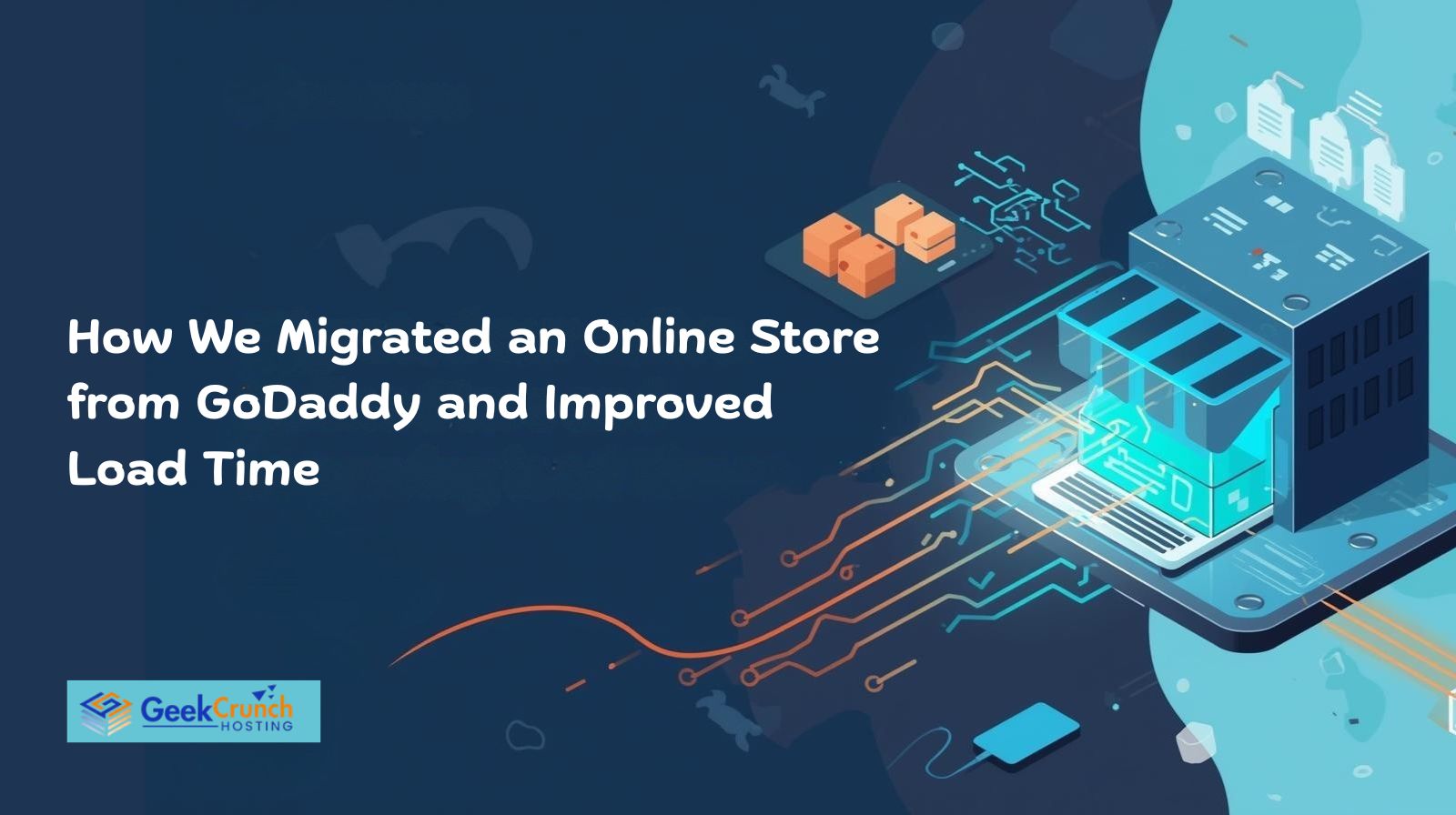(And How You Can Avoid Them)
When we first started deploying and managing VPS (Virtual Private Server) environments at Geek Crunch Hosting (GCH), we assumed that moving from shared hosting to VPS would automatically provide better performance, enhanced security, and full control.
The truth was very different.
While VPS hosting does provide dedicated resources and flexibility, it is not a “set-and-forget” solution. Without proper management, a VPS can easily cost more than dedicated hosting not just in terms of infrastructure pricing, but through downtime, resource overages, security incidents, and troubleshooting hours.
Over 18 months, these operational issues cost us nearly $10,000, including development time, damage to client relationships, and incident response work.
This article breaks down the five biggest mistakes we made, how they cost us money, and what you can do to avoid repeating those errors.
1) Treating VPS Like Shared Hosting
In the early phase, our team assumed that after provisioning a VPS, it would perform optimally without additional configuration. This was one of our most expensive misunderstandings.
A VPS is not pre-secured, optimized, or tuned for your workload. Unlike shared hosting, where the provider manages underlying security, software patches, and resource tuning, VPS requires hands-on administration.
Because of this misconception, several issues emerged:
- Slow loading times during peak hours
- Unpatched services that were vulnerable
- Inconsistent performance due to unoptimized caching
We faced multiple service complaints from clients because websites became unresponsive during moderate traffic growth. The absence of server-hardening practices left the system exposed to brute force attempts, resulting in downtime.
The core problem: We did not configure baseline security and optimization like a production environment would require.
Corrective actions included implementing:
- Firewalls (iptables, UFW)
- Fail2Ban for brute-force protection
- Malware scanning
- PHP-FPM tuning
- Nginx/Apache performance tuning
- Removal of unused packages and ports
Once these were in place, stability improved dramatically. But the time and money spent learning this lesson were significant.
2) Not Setting Up Real-Time Server Monitoring
Without proactive monitoring, you are essentially blind to what is happening on your server. In our case, this resulted in one of the most unnecessary financial losses we experienced.
Initially, our team relied on log files and manual inspection. We assumed that reviewing server logs once in a while would be enough to stay ahead of issues. Unfortunately, issues rarely happen when someone is watching.
The issue:
A small malicious script was deployed on one of our nodes via a compromised plugin. It was mining cryptocurrency using CPU resources at full capacity. Because monitoring was not in place, it ran unnoticed for five days.
This single event led to:
- Over $1,400 in overage billing
- A severely degraded host environment
- Poor performance for other users sharing the machine
Had basic resource alerts been enabled, the issue could have been addressed within minutes. Instead, we were notified only after performance degradation was reported by clients.
To solve this, we implemented:
- Resource monitoring (CPU, RAM, disk)
- Log-based intrusion alerts
- External uptime monitoring
- Automated Slack notifications
- Threshold-based escalation
We now use tools such as Grafana, Prometheus, UptimeRobot, and custom scripts to alert us to unusual behavior within seconds.
This experience highlighted a simple but costly truth:
If you do not monitor your infrastructure, it will fail silently, and you will pay for it.
3) Poor Backup Strategy and Improper Storage
Initially, we believed that simply using backup plugins at the application level, mainly for WordPress sites, was sufficient. We never implemented a structured backup policy.
Then disaster struck.
One of our servers encountered filesystem-level corruption due to a sudden storage failure. The local backup files stored on the same machine were also affected. Because there were no off-site or point-in-time snapshots, we spent nearly 12 hours rebuilding the website using older, incomplete sources and manual reconstruction.
Financial outcome:
Around $4,500 in combined labor costs, incident handling, and discounts for the affected client.
This was one of the most labor-intensive failures we ever experienced.
Corrective action involved deploying a proper 3-2-1 backup strategy:
- Three copies of data
- Two local but on separate storage mediums
- One off-site copy (AWS S3, Backblaze, or remote SFTP)
Additionally, we implemented:
- Daily incremental server snapshots
- Integrity testing of backups
- Off-site replication
- Automated recovery tests
We also trained our team to routinely verify that backups are valid. A backup that cannot be restored is not a backup.
This mistake taught us that data protection is not optional; it is foundational.
4) Delayed Security Patch Management
In our early stages, we adopted a mindset of “If it’s working, don’t touch it.”
This approach failed us quickly.
Delaying updates on system packages, PHP extensions, and software components exposed our servers to vulnerabilities. One such outdated component allowed injection of malicious code into a client’s site.
Consequences included:
- Malware injection
- Damage to search rankings
- Domain blacklisting
- Urgent incident response
- Fees for professional cleanup
- Customer refunds
Total cost: Approximately $2,300.
To prevent similar incidents, we implemented:
- Automated patching schedules
- Critical security updates within 24 hours
- Use of staging environments for testing
- Regular audits
- Immutable infrastructure principles for some workloads
Every VPS must have heat-mapped patch priority and regular maintenance windows. Post-incident, we saw a major reduction in vulnerability exposure.
5) Inadequate Capacity Planning
When purchasing VPS resources, we initially based decisions on cost rather than usage requirements. We underestimated client workloads and expected that a mid-tier VPS plan would accommodate traffic spikes.
During an event campaign, a website’s traffic climbed dramatically. Due to insufficient RAM and CPU allocation, the server crashed repeatedly. This resulted in:
- Website downtime during peak revenue hours
- Loss of the client
- Refunds and compensation
The net cost exceeded $2,000.
We corrected this by implementing:
- Benchmarking workloads before deployment
- Historical traffic analysis
- Auto-scaling for cloud hosts
- Migration paths to NVMe-based nodes
- Continuous performance profiling
Capacity planning is not about overspending. It is about forecasting realistic usage and ensuring that clients have enough headroom to grow. Proper resource planning avoids emergency upgrades and downtime.
Lessons Learned
These failures were not the result of poor VPS hardware or unreliable vendors. They stemmed from operational mismanagement and incorrect assumptions.
The difference between a successful VPS deployment and an expensive one lies in:
- Standard security practices
- Proactive monitoring
- Reliable backups
- Timely updates
- Capacity planning
Once we standardized these processes, VPS performance stabilized, client complaints dropped, and operational costs decreased significantly.
What We Do Differently At GCH Today
To avoid repeating these mistakes, we implemented:
- Active security hardening
- Daily automated off-site backups
- 24/7 monitoring with real-time alerts
- Predictive resource planning
- Regular software updates
- Performance tuning
- Incident response playbooks
These improvements have dramatically reduced incidents and improved client satisfaction.
Conclusion
VPS hosting is powerful and cost-effective when handled correctly. However, neglecting basic operational practices such as monitoring, patching, backups, and resource analysis can turn VPS hosting into an expensive liability.
These five mistakes cost us more than $10,000 in billings, labor, and service credits.
The lessons we learned helped us transform our internal processes and strengthen our hosting standards.
Avoiding these mistakes will save you time, money, and stress — and will ensure that your VPS delivers the performance and reliability you paid for.




